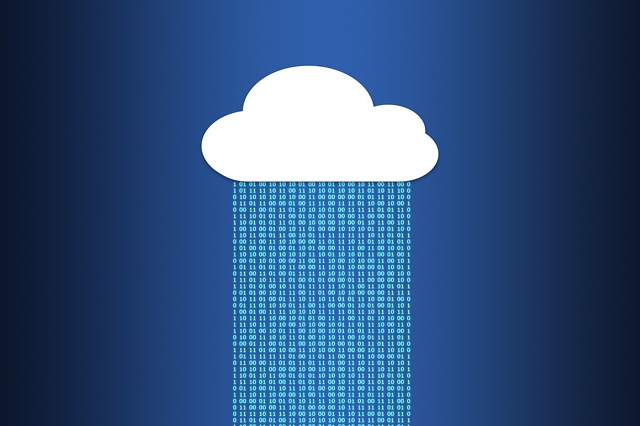George Gilder, one of the preeminent economic and technological thinkers of the past four decades, believes that decentralization via technologies like blockchain will disrupt cloud computing. In his latest book, Life After Google (2018), he forecasts the decline of closed ecosystems that are based on big data, centralized cloud storage, and machine intelligence. Alternatively, these “walled gardens” will be displaced by the rise of decentralized blockchains – open-source systems with distributed storage. Not only does distributed data via the blockchain offer increased security and an immutable record that protects one from coercion, but it will unleash a new era of innovation by magnifying the power of human ingenuity, to a level that’s impossible in a closed system.

George Gilder – economist, venture capitalist, futurist, journalist and author, his 1981 New York Times bestseller, Wealth and Poverty, advanced a case for supply-side economics and capitalism during the early months of the Reagan administration. George is also a co-founder and Senior Fellow at the Discovery Institute, a non-profit think tank based in Seattle, Washington.
Cloud Computing is Reaching It’s Limits
Just a decade ago, cloud computing was the hot new technology. It ushered in a new era of software innovation, shattering limitations related to data storage, flexibility, and cost. But according to George Gilder, cloud computing is reaching its limits. Improvements in parsing big data are incremental at this point. Due to physical constraints, big data storage centers are experiencing diminishing returns.
In his book, Life After Google, Gilder spends some time describing the Google Data Center up in The Dalles, Oregon. He makes the case that despite the misconception that cloud computing is this ethereal thing, its not. Cloud computing, in actual fact, is very energy intensive. Google’s data center in The Dalles, for example, is a huge, industrial-scale operation. There is no coincidence that it was built up in Oregon, next to a cheap source of hydroelectric power and an ample supply of glacial water for cooling. Like all other factories, cloud data centers are extremely energy and resource intensive. And like all other factories, they eventually run into the law of diminishing returns. Going forward, its going to be difficult for big data centers like The Dalles to get enough power. It’s going to be difficult to cool them adequately. Big data centers, as it turns out, are bumping into physical limitations on their size and efficiency.
Bell’s Law – The Birth And Death of Computer Systems (Computer Classes)
Another indicator that cloud computing and big data centers are nearing the end of their life cycle, is Bell’s Law. Gilder points to the premise that – according to Bell’s Law – roughly every decade, a new and lower priced computer system (computer class) forms, based on a new programming platform, network, and interface. This results in the establishment of a whole new industry.
Bell’s law of computer classes formulated by Gordon Bell in 1972 describes how types of computing systems (referred to as computer classes) form, evolve and may eventually die out. Partially correlated with Moore’s law (which states that the number of transistors per chip double every 24 months), Bell’s Law says every 10 years, technology improves between a hundred and a thousand fold, and it entails an entirely new architecture. New classes of computers create new applications resulting in new markets and new industries.
Cloud Computing (Centralized Data) – On It’s Way Out
George Gilder believes that cloud computing, which was a great triumph for its time, is now reaching the end of the line. If you do the math, from the first time Gilder wrote about the cloud (in an article in Wired in 2006), stating it would dominate the next Bell’s Law phase, we are now 15 years removed from that time. In other words, cloud computing is already in the mature stage of its life cycle.
Blockchain (Distributed Data) – The New Kid On the Block
But what will take its place? If the cloud is at the latter stage of its life cycle, that means that there is already a new architecture in the early part of its evolution. And in fact there is. Shortly after the Great Financial Crisis of 2007-2008, a new decentralized digital currency emerged, one verified by network nodes through cryptography and recorded on a public distributed ledger called a blockchain. In 2009 Bitcoin was born, ushering in a new age of blockchain technology. Since that time, the blockchain – distributed ledger technology – has seen a meteoric rise.
In keeping with Bell’s Law, it takes up to a decade to understand how a new computer class forms, evolves, and is likely to continue. So blockchain is right on track to disrupt the existing class – to take the place of cloud computing and centralized data storage. George Gilder says that this new architecture, one that has availed itself to the developer community, provides superior security, has the ability to prevent corruption and manipulation of transaction data, and the power to magnify innovation through its decentralized nature.
Distributed Data on a Blockchain Provides Superior Security to Centralized Storage
One of the biggest challenges of centralized storage is security. With centralized cloud computers, there is always going to be the risk of losing data or having your data fall into the wrong hands. What happens if a data center go down? It basically means you are down as well, since you no longer have access to your data. Or even worse, what happens when the data center’s security is compromised, and it is hacked? Well, then someone has access to your data, and maybe, even your assets. So while centralized storage on the cloud affords us many great benefits, users also need to weigh the risks of the product.
Fortunately, distributed data on a blockchain solves many of the cloud’s most troubling security risks. First, blockchain technology is inherently decentralized, meaning it isn’t vulnerable to a single point of failure like centralized cloud storage. Second, with distributed ledger technology (DLT), each transaction added to a blockchain is validated by multiple computers in the network, ensuring that a single system cannot add invalid blocks. This alone means that blockchain is much more resistant to attack. But there’s more. For additional security, when a new block is added to a blockchain, it is linked to the previous block using an immutable cryptographic signature called a hash. This ensures the chain is never broken and that each block is permanently recorded, since the only way to alter past transactions in blockchain is to alter all subsequent blocks first.
Distributed Data on a Blockchain Provides the Ability of Attestation
Apart from superior security, there is another disruptive aspect of distributed data on a block chain that isn’t getting enough recognition. And no, its not privacy. While the blockchain can provide a certain level of privacy, this isn’t nearly as critical, according to George Gilder, as being able to prove that you didn’t do something.

Blockchain cryptocurrencies are often compared to cash because they seem to allow anonymity. But it’s really better than cash. It’s a major step forward beyond cash because, not only does it allow you to conduct anonymous transactions, it also enables you to demonstrate your behavior and your transactions unimpeachably if you have to – to the IRS, to a prosecutor, or to whoever it may be. The blockchain gives you an immutable record that allows you to document your behavior.
So, for instance, the government wants to charge you with an unsubstantiated offense. With all transactions recorded on the blockchain, you now have an immutable record that is irrefutable. So the blockchain provides the ability of attestation, thereby eliminating coercion by government, big business, or from any kind of frivolous litigation. This is a huge step forward in personal freedom, one that’s not only sorely needed in developing nations with high levels of corruption, but more and more so, in western nations like the United States.
Distributed Data – Like the Distribution of Human Minds – Magnifies Innovation
As we move into a new era of decentralization via distributed data on the blockchain, George Gilder believes that human ingenuity and technological innovation will be magnified. He argues that the reason blockchain – the first fully decentralized data system – succeeds, is the same reason that human minds and human cultures triumph through their decentralized distribution around the planet.
Innovation triumphs to the extent that it captures the genius of human beings. And human beings – all human minds – are not all converged in some data center somewhere. Rather, human minds are separate and distributed. So technological progress will ultimately mimic the distribution of human minds.
The blockchain is what the cloud was always supposed to be – a truly transparent and interconnected network that eliminates the need for a centralized authority. The blockchain distributes personal data rather than concentrating it into the hands of a few big data collectors (like Google or Facebook). Whereas these “walled gardens” concentrate your information, then force you to petition to their centralized database for the right to access your own data, blockchain distributes all the personal information across the network. So rather than simply collecting giant data clumps in the cloud, blockchain mimics the way human intelligence and ingenuity is distributed, and how innovation is amplified. And in essence, this is Blockchain’s true genius.






